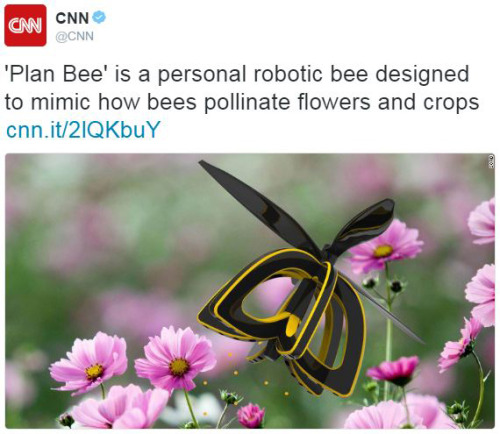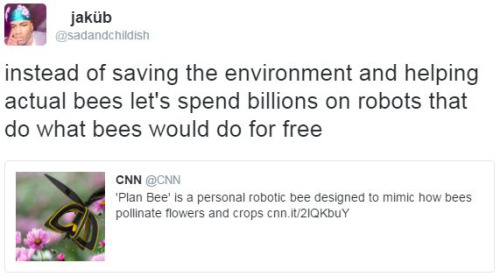This Guy Raised An Abandoned Moose Calf With His Horses, And Believe It Or Not, He Has Trained It For

This guy raised an abandoned moose calf with his Horses, and believe it or not, he has trained it for lumber removal and other hauling tasks. Given the 2,000 pounds of robust muscle, and the splayed, grippy hooves, he claims it is the best work animal he has. He says the secret to keeping the moose around is a sweet salt lick, although, during the rut he disappears for a couple of weeks, but always comes home…. Impressive !! MINNESOTA CLYDESDALE
More Posts from Badweatherbartender and Others
update: those people hired me
today at my internship the literal words “i love efficiency” came out of my mouth in front of people i want to hire me in the future
“I’ll never talk” ok that’s cool. didn’t really expect you to. I’m not gonna torture you for information—I have an elaborate espionage network for that. everyone knows torture is an unreliable means of extracting information and anything obtained from it is not to be trusted. I’m not an idiot. I’ve read all the torture science. if there’s one thing I can’t stand it’s the foolish notion that torture serves a practical purpose. no, my torture dungeon exists for good, clean fun. it’s all about the love of the game. strap ’em to the rack, boys!



Me: Yes sir I understand that the office door cannot be closed when two colleagues of opposite gender are alone together due to sexual misconduct concerns but as an openly bisexual employee I have to ask if leaving two colleagues of the same gender entirely unsupervised isn't a double standard
Me: Like. I feel I should also have my ass covered if a same-gender colleague accuses me of shit, you know
Bossman: Nahhhhhhh it's good
The morally grey cathedral goblin that lives on my shoulder and judges the value of my kneejerk impulses: If you grabbed his ass right now he would learn such an important lesson forever but we don't roll like that bro
Me: (out loud) Okay
“average person eats 3 spiders a year” factoid actualy just statistical error. average person eats 0 spiders per year. Spiders Georg, who lives in cave & eats over 10,000 each day, is an outlier adn should not have been counted
I just saw a screencap of a tweet that said, “married couple looking for experience dom to tell them what to make for dinner each night” and honestly, yeah. Same.
One of the funny things about LotR is that almost every people in it professes to disbelieve in the supernatural, but because they live in a fantasy world their baseline for "natural" is so jacked up. The Rohirrim are like, yeah, there's a wizard in this tower and ancient tradition that we have no reason to doubt says this mountain is full of ghosts, but walking trees? Short people? I don't think so. Galadriel is like, "Listen I heard you describe what I do as magic and look I just gotta clear some things up, okay." Gondorians are like, yeah, of course the Enemy has spectres of men who lived long ago and never died and can now fly above us and incapacitate us with just their voices. This is just a fact of life, okay? But shut up about this magic weed that makes comatose people better. That's an old wives' tale. Royalty? Press X to doubt.
The people group in Tolkien's work who seem most receptive to magic and least restricted by their own notions of what it can do actually seem to be the hobbits. And they use it to avoid meeting people they don't want to talk to
Yellowjacket-Mimicking Moth: this is just a harmless moth that mimics the appearance and behavior of a yellowjacket/wasp; its disguise is so convincing that it can even fool actual wasps

This species (Myrmecopsis polistes) may be one of the most impressive wasp-mimics in the world. The moth's narrow waist, teardrop-shaped abdomen, black-and-yellow patterning, transparent wings, smooth appearance, and folded wing position all mimic the features of a wasp. Unlike an actual wasp, however, it does not have any mandibles or biting/chewing mouthparts, because it's equipped with a proboscis instead, and it has noticeably "feathery" antennae.
There are many moths that use hymenopteran mimicry (the mimicry of bees, wasps, yellowjackets, hornets, and/or bumblebees, in particular) as a way to deter predators, and those mimics are often incredibly convincing. Myrmecopsis polistes is one of the best examples, but there are several other moths that have also mastered this form of mimicry.

Above: Pseudosphex laticincta, another moth species that mimics a yellowjacket
These disguises often involve more than just a physical resemblance; in many cases, the moths also engage in behavioral and/or acoustic mimicry, meaning that they can mimic the sounds and behaviors of their hymenopteran models. In some cases, the resemblance is so convincing that it even fools actual wasps/yellowjackets.

Above: Pseudosphex laticincta
Such a detailed and intricate disguise is unusual even among mimics. Researchers believe that it developed partly as a way for the moth to trick actual wasps into treating it like one of their own. Wasps frequently prey upon moths, but they are innately non-aggressive toward their own fellow nest-mates, which are identified by sight -- so if the moth can convincingly impersonate one of those nest-mates, then it can avoid being eaten by wasps.

Above: Pseudosphex laticincta
I gave an overview of the moths that mimic bees, wasps, yellowjackets, hornets, and bumblebees in one of my previous posts, but I felt that these two species (Myrmecopsis polistes and Pseudosphex laticincta) deserved to have their own dedicated post, because these are two of the most convincing mimics I have ever seen.

Above: Pseudosphex sp.
I think that moths in general are probably the most talented mimics in the natural world. They have so many intricate, unique disguises, and they often combine visual, behavioral, and acoustic forms of mimicry in order to produce an uncanny resemblance.
Several of these incredible mimics have already been featured on my blog: moths that mimic jumping spiders, a moth that mimics a broken birch twig, a moth caterpillar that can mimic a snake, a moth that disguises itself as two flies feeding on a pile of bird droppings, a moth that mimics a dried-up leaf, a moth that can mimic a cuckoo bee, and a moth that mimics the leaves of a poplar tree.
Moths are just so much more interesting than people generally realize.
Sources & More Info:
Journal of Ecology and Evolution: A Hypothesis to Explain Accuracy of Wasp Resemblances
Entomology Today: In Enemy Garb: A New Explanation for Wasp Mimicry
iNaturalist: Myrmecopsis polistes and Pseudosphex laticincta
Transactions of the Entomological Society of London: A Few Observations on Mimicry


dont you just love capitalism..
Me: I am a relatively smart, capable, mature human being. I can figure things out.
Also Me: *frantically FaceTiming my sister for help so I don’t have to tell the lady I’m babysitting for that I don’t know how to use child-proofed doorknobs*
-
 100worms liked this · 1 week ago
100worms liked this · 1 week ago -
 theamaus liked this · 1 week ago
theamaus liked this · 1 week ago -
 halfaqueen reblogged this · 1 week ago
halfaqueen reblogged this · 1 week ago -
 yourlocalegotisticalqueerishere reblogged this · 1 week ago
yourlocalegotisticalqueerishere reblogged this · 1 week ago -
 widthtomjones reblogged this · 1 week ago
widthtomjones reblogged this · 1 week ago -
 averybrilliantstar liked this · 1 week ago
averybrilliantstar liked this · 1 week ago -
 bugenemy liked this · 1 week ago
bugenemy liked this · 1 week ago -
 sugimoto-dorm reblogged this · 1 week ago
sugimoto-dorm reblogged this · 1 week ago -
 rubiatinctorum reblogged this · 1 week ago
rubiatinctorum reblogged this · 1 week ago -
 rubiatinctorum liked this · 1 week ago
rubiatinctorum liked this · 1 week ago -
 sugimoto-dorm liked this · 1 week ago
sugimoto-dorm liked this · 1 week ago -
 silver-tongued-randomness liked this · 1 week ago
silver-tongued-randomness liked this · 1 week ago -
 wingkalas reblogged this · 1 week ago
wingkalas reblogged this · 1 week ago -
 wingkalas liked this · 1 week ago
wingkalas liked this · 1 week ago -
 kalice-yuri reblogged this · 1 week ago
kalice-yuri reblogged this · 1 week ago -
 kalice-yuri liked this · 1 week ago
kalice-yuri liked this · 1 week ago -
 ipromiseididntlightitonfire reblogged this · 1 week ago
ipromiseididntlightitonfire reblogged this · 1 week ago -
 ipromiseididntlightitonfire liked this · 1 week ago
ipromiseididntlightitonfire liked this · 1 week ago -
 stunt-muppet liked this · 1 week ago
stunt-muppet liked this · 1 week ago -
 bastard-pyro liked this · 1 week ago
bastard-pyro liked this · 1 week ago -
 purgknight reblogged this · 1 week ago
purgknight reblogged this · 1 week ago -
 magsamaire reblogged this · 1 week ago
magsamaire reblogged this · 1 week ago -
 teddiepoe reblogged this · 1 week ago
teddiepoe reblogged this · 1 week ago -
 roymblog reblogged this · 1 week ago
roymblog reblogged this · 1 week ago -
 fcktaken liked this · 1 week ago
fcktaken liked this · 1 week ago -
 southhpaw liked this · 1 week ago
southhpaw liked this · 1 week ago -
 krahler liked this · 1 week ago
krahler liked this · 1 week ago -
 penumbralbeast reblogged this · 1 week ago
penumbralbeast reblogged this · 1 week ago -
 katok0r0e liked this · 1 week ago
katok0r0e liked this · 1 week ago -
 bunnyiscthulhu reblogged this · 1 week ago
bunnyiscthulhu reblogged this · 1 week ago -
 bunnyiscthulhu liked this · 1 week ago
bunnyiscthulhu liked this · 1 week ago -
 tymp3st reblogged this · 1 week ago
tymp3st reblogged this · 1 week ago -
 aspencrown reblogged this · 1 week ago
aspencrown reblogged this · 1 week ago -
 arasnealashandr liked this · 1 week ago
arasnealashandr liked this · 1 week ago -
 zrthyss reblogged this · 1 week ago
zrthyss reblogged this · 1 week ago -
 zrthyss liked this · 1 week ago
zrthyss liked this · 1 week ago -
 sunsetredlemonade liked this · 1 week ago
sunsetredlemonade liked this · 1 week ago -
 celebrenithil reblogged this · 1 week ago
celebrenithil reblogged this · 1 week ago -
 theoddballinyourcloset liked this · 1 week ago
theoddballinyourcloset liked this · 1 week ago -
 anon555xxx liked this · 1 week ago
anon555xxx liked this · 1 week ago -
 escaped-goat liked this · 1 week ago
escaped-goat liked this · 1 week ago -
 pi3rc3-th3-r3ap3r reblogged this · 1 week ago
pi3rc3-th3-r3ap3r reblogged this · 1 week ago -
 pvnk-whvre liked this · 1 week ago
pvnk-whvre liked this · 1 week ago -
 caennbun reblogged this · 1 week ago
caennbun reblogged this · 1 week ago -
 nake-x liked this · 1 week ago
nake-x liked this · 1 week ago -
 moqylodge liked this · 1 week ago
moqylodge liked this · 1 week ago -
 jesus-doing-a-kickflip reblogged this · 1 week ago
jesus-doing-a-kickflip reblogged this · 1 week ago
